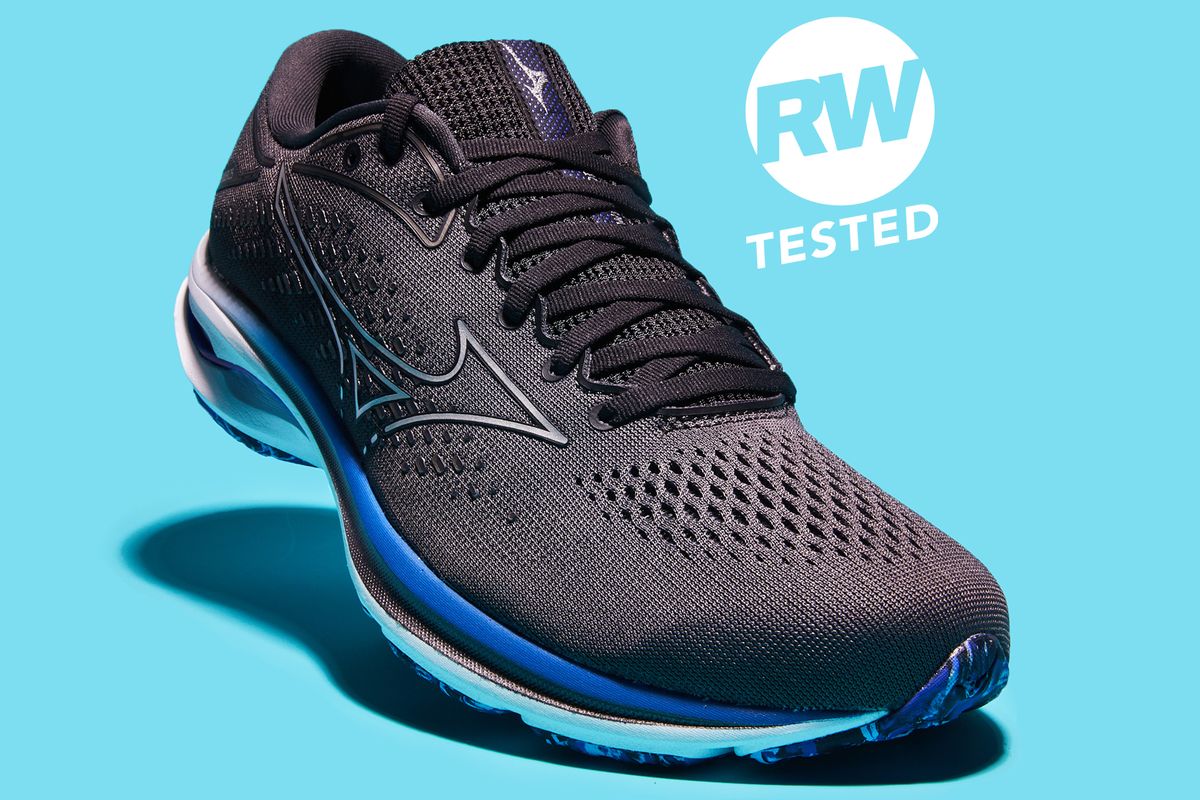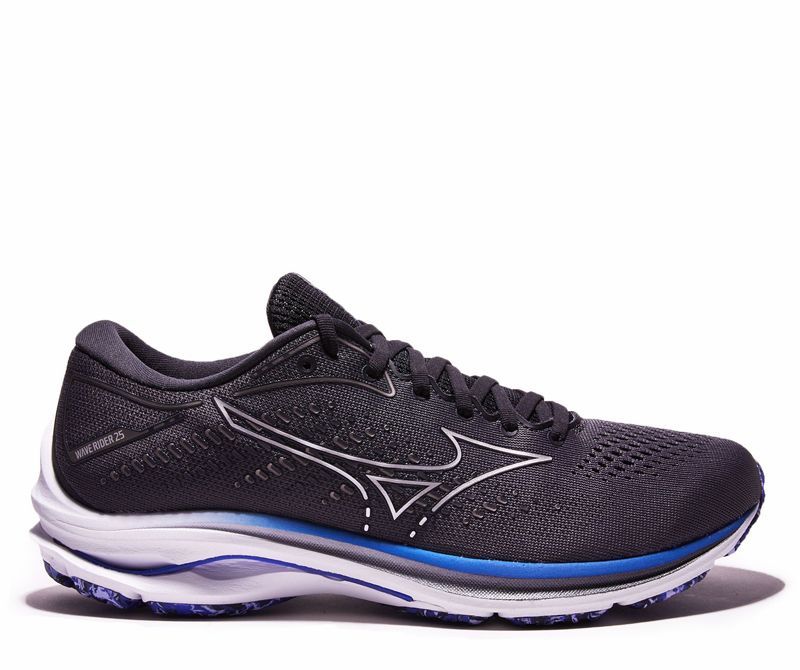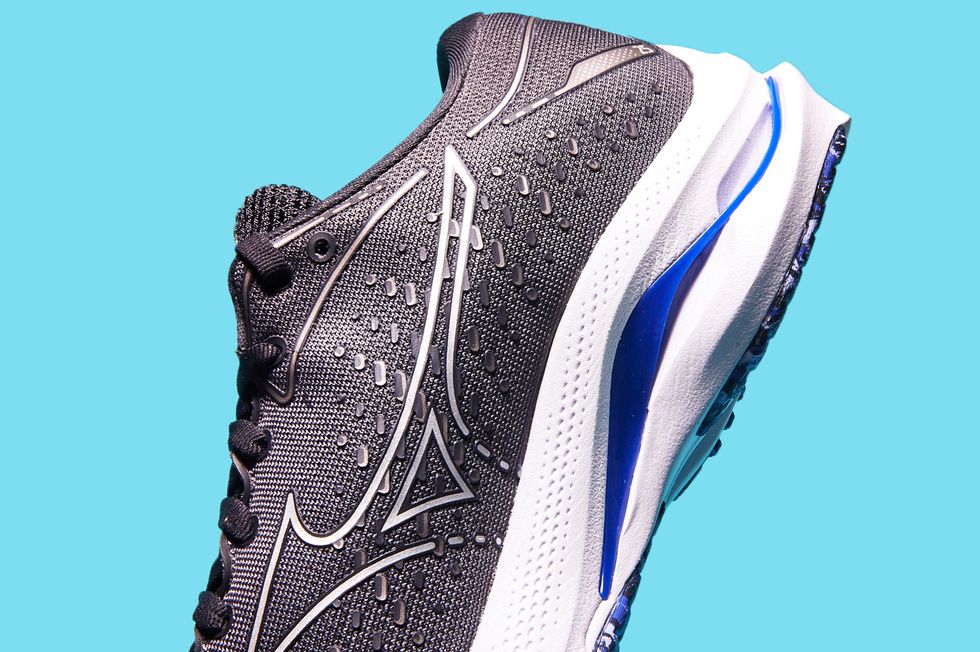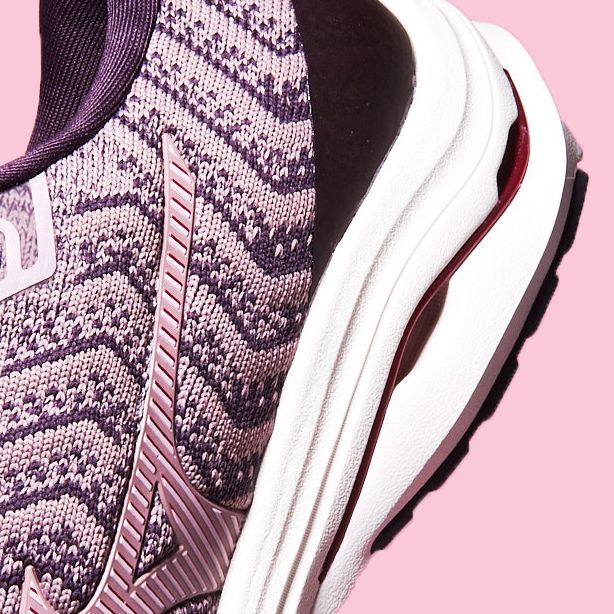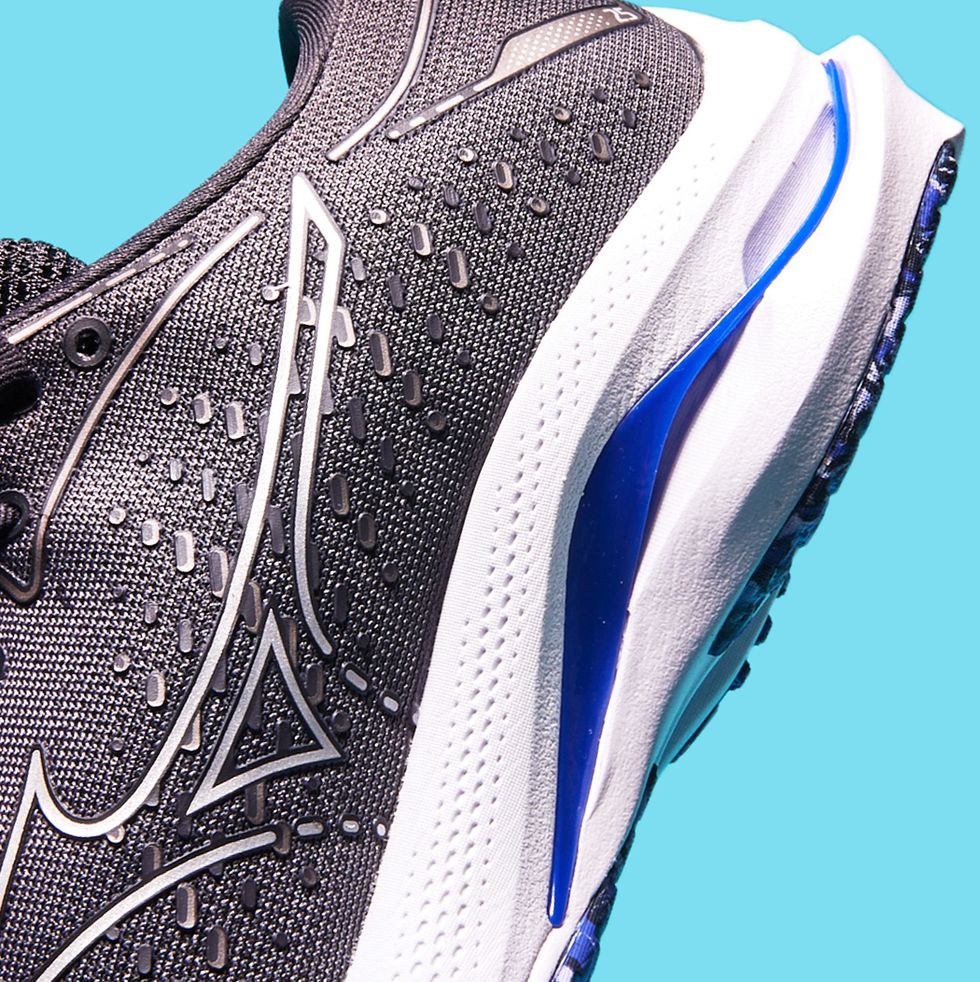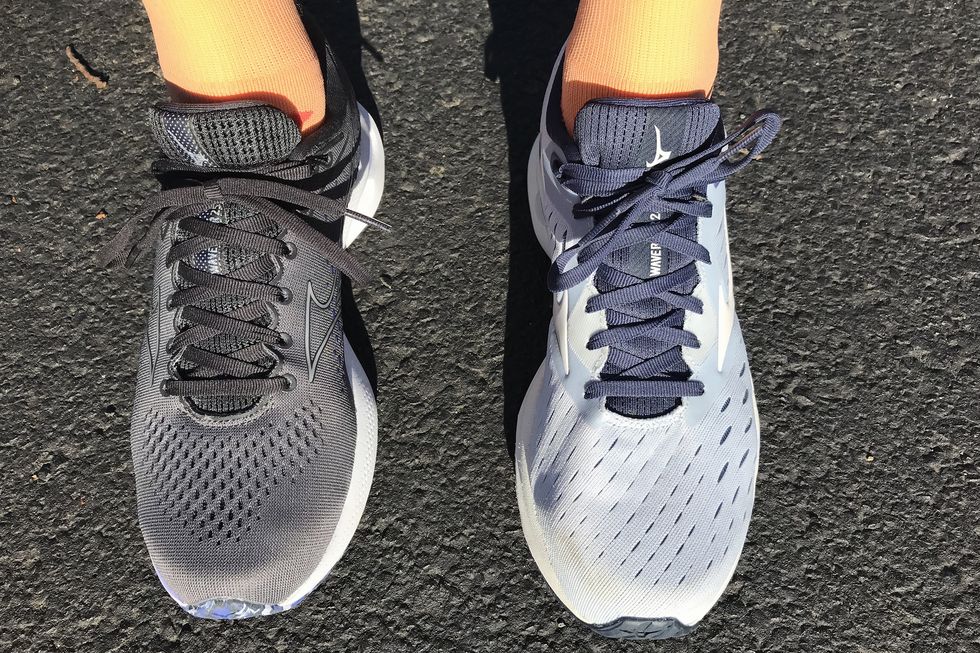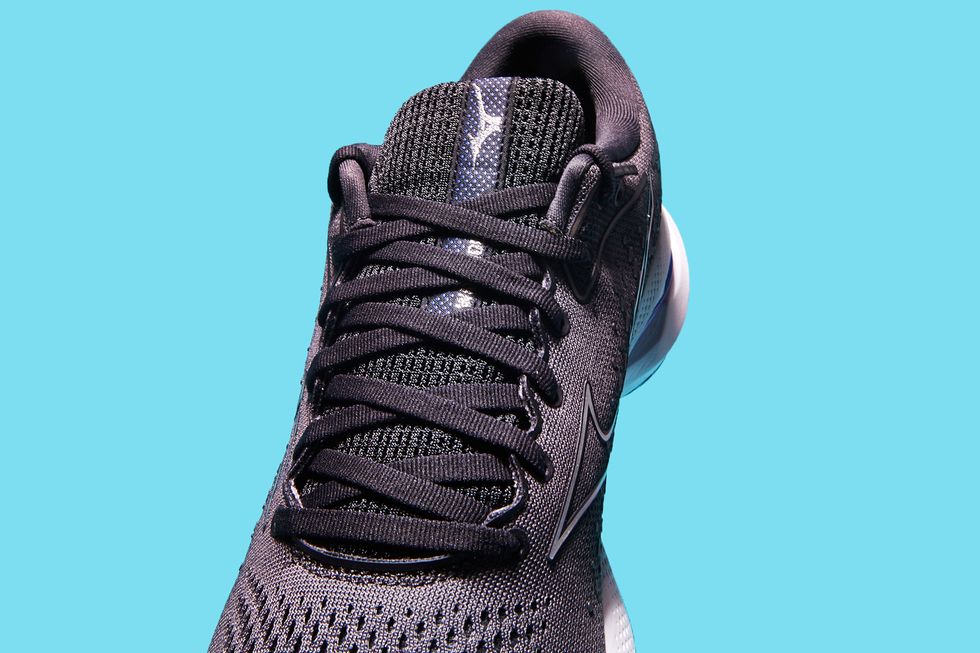The RW Takeaway: Though less versatile for uptempo efforts than Riders past, the 25th model is just as durable and even more cushioned for easy-paced long runs.
- Full-length Enerzy foam midsole feels softer and more flexible, especially in the forefoot
- New engineered mesh upper adds collar padding and keeps its soft gusseted tongue
- Carbon rubber outsole excels on wet roads and will likely outlast 500 miles of wear
Price: $135
Type: Road
Weight: 9.7 oz (M), 8.1 oz (W)
Drop: 12 mm
Buy Men’s Buy Women’s More Images
More From Runner's World

Twenty-five marks a huge milestone for the Rider, and that’s not just because Mizuno has now filled a quarter century with models of this shoe. One longtime tester pegged this version as his favorite yet. As a wearer of the Rider since its 13th version, I can vouch that it’s definitely the softest and most cushioned Rider I’ve ever worn. That in part is because the brand delivered on the promise it teased us with in the Rider 24: a full-length midsole layer of luxuriously soft Enerzy foam.
New Foam-Plate Combo Feels More Seamless
In previous Riders, the midsole featured a mix of foams—ranging from its firmer U4ic to TPU-bead based XPOP—both above and below the wave plate. Though comfortable underfoot, the combination of different foams made the shoe’s ride feel a bit disjointed. Depending on whether runners landed on the heel or closer to the forefoot, testers felt a slow or messy transition between touchdown and toe-off. With only Enerzy foam throughout, the ride is smoother and more consistent—especially when paired with the 25’s new castor bean-based wave plate.
Built at a higher amplitude (the Rider 24’s plate was flatter), it helps return more energy with each footstrike, and more closely matches the shape of the arch. “This shoe was a blast from the past, like finding an old pal once again and rekindling a great friendship,” one tester said after a long hiatus from the Rider line. “Smooth and springy, the 25 makes a comfortable ride for endurance work and longer runs when you’ll be spending a lot of time on your feet.”
Bye Bulky Overlays, Hello Softer Mesh
If you’re still putting miles on a pair of the Rider 23, you’ll notice a bigger difference stepping into the 25 than if you’ve since upgraded to the 24. Unlike Rider 23, both the 24 and 25 have gusseted tongues with a bit more padding around the ankle collars, which lend an absolutely rock-solid heel hold. And now, 3D-printed PU RunBirds finally replace the predecessors’ heavier plasticky overlays, lightening up the shoe overall (and honestly, just getting the Rider up to table stakes for a daily trainer in 2022). The place I still have to nitpick is in the toebox—I find it’s still a bit cramped for my somewhat wider feet, though our narrow-footed testers say they appreciate the slimmer fit throughout. For comparison, I found the upper less spacious than both Brooks’s Ghost and Saucony’s Ride.
On the Run: 24 vs. 25
On foot, the shoes’ rides were similar enough that I could log over five miles without any discomfort, but I did notice a difference. The 25 felt softer, especially in the forefoot, and more flexible. Overall, I found it more comfortable, but slower on toe-off than the 24. Comparatively, the 24 has a slightly stiffer feel with a bit more snap. And, while both shoes are neutral, the 25 offers a touch more stability—likely from its thicker, longer wave plate. (As soon as I laced up, I noticed the 25 supporting the medial side of my foot, slightly resisting an inward roll, which is something I never really noticed in past Rider models.) My foot also sat a little deeper inside the midsole of the 25, whereas I felt more “on top of” the foam in the 24. It’s a very slight difference, but it helped give the 25 a securer heel fit so I didn’t lift up out of the shoe—that’s important when the heel-toe offsets are already this high.
How One Tester Put This Shoe Through the Paces
Aaron B. | Tester since 2021
Arch: Medium | Gait: Neutral | Footstrike: Midfoot
“My first day of testing was a six-mile break-in run on the treadmill. The very next day, I went for eight miles on the track, mixing in a variety of tempo-pace efforts and repeats of 800s, 400s, and 200s. The Rider had great support and comfort, though I noticed a little clunkiness during the speedwork portion of the workout. At the end of this run I threw in some hill repeats. On the uphills, they felt sturdy and solid, yet quick. During the downhills, however, I noticed some rubbing of my outer pinky toes against the toebox. I finished out this training session with some balance and strength work, and the Rider provided great foundational support and flexibility. After a rest day, I took the Wave Riders out on the roads for a 10K tempo. For me, the sign of a good running shoe is when you don’t even think about them on your feet; you just run, smoothly and confidently. That’s exactly what happened—the Rider felt smooth as butter on the rolling hills of Coopersburg, PA. As the rest of my runs added up over four weeks of testing, I averaged between 28 and 30 miles per week. The Wave Rider 25’s cushioning and support was fantastic—I would choose these as my go-to for any longer distance runs over 10K, though not for track or speedwork.”
